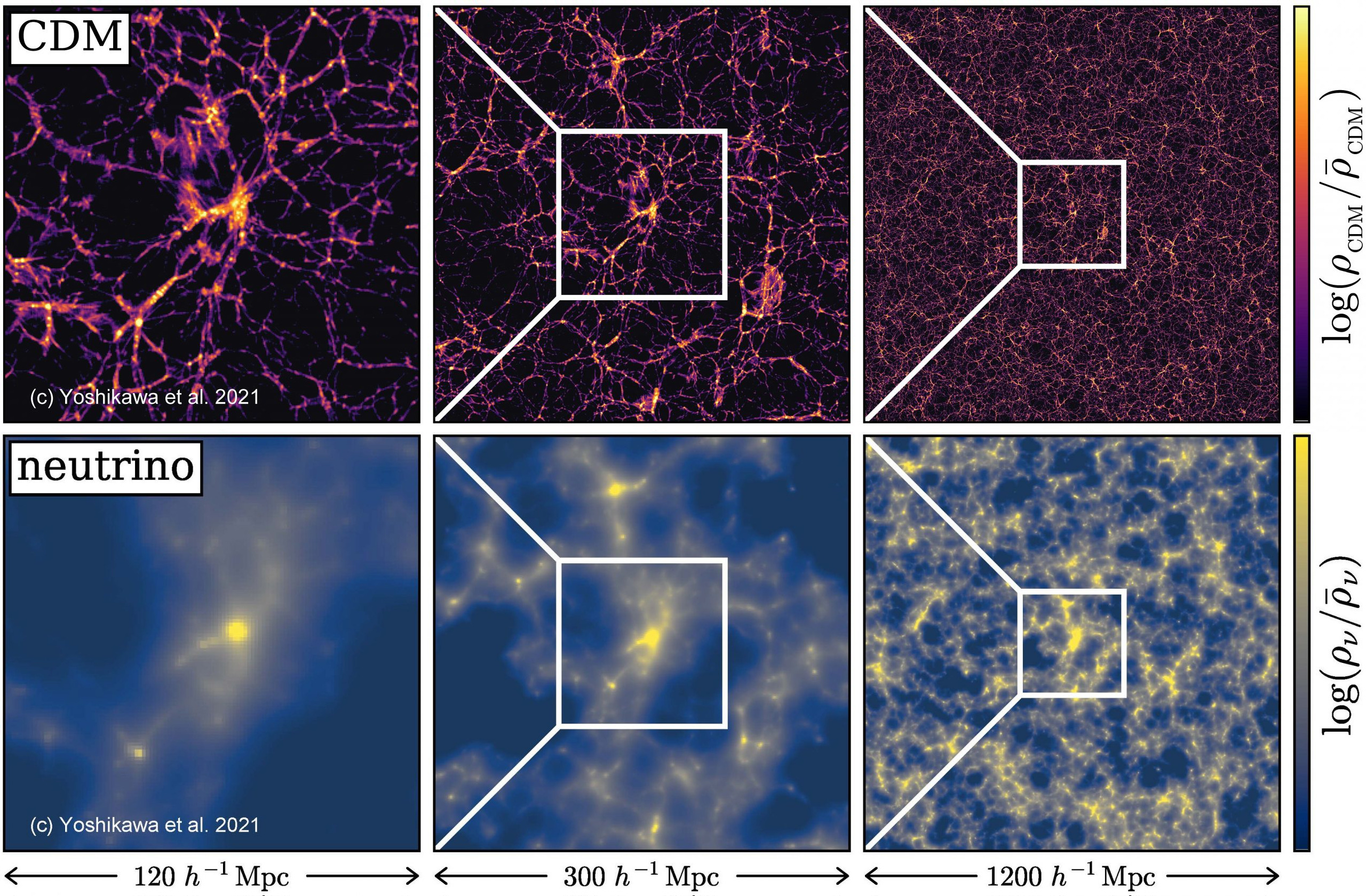Featured Articles
[Press release] The Cosmic Neutrino Background: World's First Six-dimensional Simulations
Yoshikawa Kohji (University of Tsukuba, Center for Computational Sciences)
Tanaka Satoshi (University of Kyoto)
Yoshida Naoki (University of Tokyo)
Saito Shun (Missouri University of Science and Technology)

In this research, we solved the Vlasov-Poisson equations directly by running our new high-precision numerical scheme for solving the Vlasov equation developed by the University of Tsukuba and the University of Tokyo on Japan's most powerful supercomputer, yielding 6-dimensional distributions of the neutrinos permeating our universe. This was the first successful simulation of this type in the world. This achievement allowed an accurate investigation of the collective motion of neutrinos in the large scale structure of the universe, with important implications for galaxy formation. The research builds a foundation to construct a theoretical model for accurately measuring the mass of neutrinos. Figure: The neutrino (left) and dark matter (right) density distribution in the large scale structure of the universe. Neutrinos are light but have high velocity dispersions and follow a spatially diffuse distribution, whereas dark-matter collapses into filametary high-density regions.
References
- Press release (University of Tsukuba)
- [Original paper] Cosmological Vlasov–Poisson Simulations of Structure Formation with Relic Neutrinos: Nonlinear Clustering and the Neutrino Mass, Yoshikawa, K., Tanaka, S., Yoshida, N., Saito, S., 2020. The Astrophysical Journal, 904, p.159.
- Corresponding author: Kohji Yoshikawa


 和 英
和 英